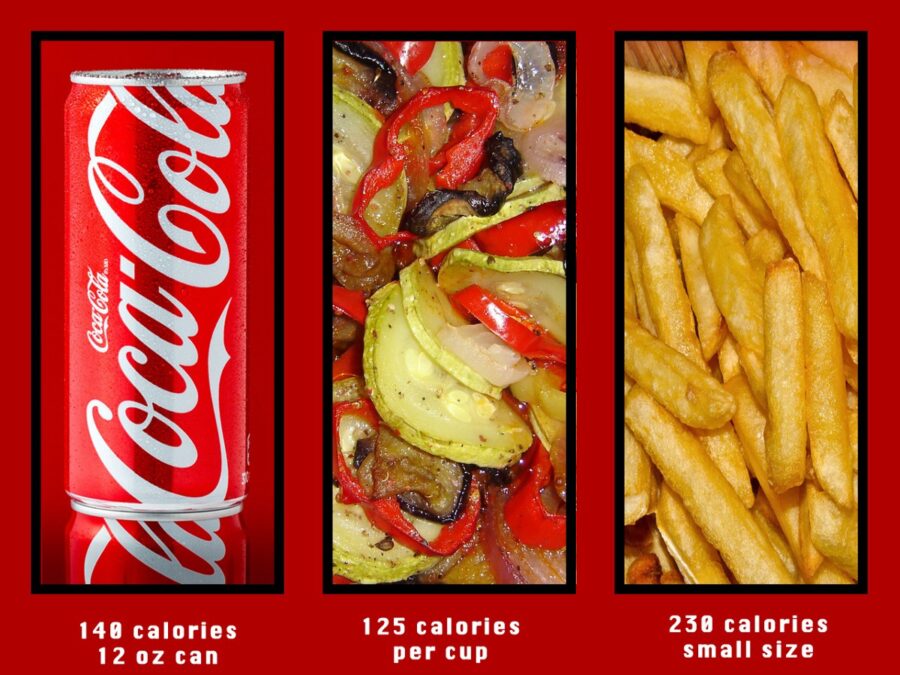Ambitious Nutritional Goals Virtually Eliminate Calorie Counting
Focus on Highly Nutritious Food Rather than Diet Style
Adopting a diet style that is touted as healthy is no guarantee of results. Eating nothing but bacon could qualify as a ketogenic diet and eating nothing but candy could qualify as a vegetarian diet. Neither diet would come close to meeting an individual’s nutritional needs or result in an appropriate caloric intake. While most people are not likely to make such ill-advised choices, most of us are probably unintentionally eating in a way that creates both nutritional deficiencies and excesses.
The secret to a healthy diet is to optimize nutrient intake while opting to exclude foods high in calories and low in nutritional value. For this purpose, the term nutrient encompasses the vitamins, minerals, amino acids and phytochemicals contained in each item of food. Achieving healthy eating goals depends upon properly determining the levels of each of these items to be consumed and eating accordingly.
The good news is that there are food tracker apps that track intake of both macronutrients (protein, carbohydrates and fats) and certain micronutrients. The bad news is that typically most of these apps do not have a complete micronutrient profile for each food consumed, nor do they track phytochemicals (more about these below). So, while food tracker apps are immensely helpful, it is also necessary to apply a couple of general rules of practice to maximize the likelihood of consuming an appropriate amount of all nutrients.
Since most diet plans focus on macronutrient intake, it is important to understand what foods within a macronutrient category are likely to contribute to each dietary requirement.
Protein
Protein is comprised of amino acids. Most amino acids can be made by our bodies even if we do not ingest a sufficient amount on a given day. However, there are nine amino acids that must be ingested in appropriate proportions in order for our bodies to function properly. These nine are referred to as essential amino acids. If one or more of the nine essential amino acids is missing, the body functions as if none are present.
Animal protein contains all of the essential amino acids and are therefore referred to as “complete proteins.” Most plants contribute some of the essential amino acids but are not complete proteins. Therefore, it is necessary to consume multiple types of plants each day to ensure adequate consumption of complete proteins. Because of this need to combine plants to make a complete protein, food trackers that track protein intake only at the macronutrient level do not allow for protein intake from plants to be properly included in the users’ metrics.
Researchers have not definitively concluded on the appropriate level of protein intake or the appropriate proportion of essential amino acids. Generally, an adult’s daily intake of complete proteins should be between 0.8g/kg — 1.6 g/kg of bodyweight depending on the type and extent of physical activity in which the adult engages.
The following table provides the latest available information on required amino acid levels. However, age, sex, type of exercise, and frequency of exercise along with certain health concerns all factor into this determination. A report jointly prepared by the World Health Organization, Food and Agricultural Organization and the United Nation’s University recommends total intake levels of 0.18 g/kg/day of essential amino acids and 0.48 g/kg/day of non-essential amino acids. Note that the WHO’s recommendations of 0.66 g/kg/day in total amino acids is lower than the minimum 0.8 g/kg/day recommended by researchers in developed countries. Therefore, these numbers may need to be adjusted to reflect total protein intake objectives.

Carbohydrates
Carbohydrates are often viewed as ranging from good carbs to bad carbs. Good carbs are typically considered to be plant foods. Bad carbs included processed grains and highly processed foods that typically include some form of grain and sugar. Ancient grains fall closer to the good end of the spectrum as they are less processed and more nutritionally dense than bad carbs but they have a greater caloric density (the ratio of calories to weight or volume of the food) than whole fruits and vegetables.
Plant foods are generally the best sources of vitamins, minerals and phytochemicals. There is now at least one medical doctor, Dr. Paul Saladino, who suggests that if you consume animals from nose to tail you can satisfy your nutrient requirements without habitually eating plants. Saladino asserts that because animals consume plants, the nutrients from the plants are contained in the tissues of the animal. However, different nutrients are stored in different animal tissues. Therefore, to access all of the nutrients consumed by the animal, it is necessary to eat nose to tail. For those who are not prepared to adopt a nose-to-tail approach to meat-eating, ensuring their diet contains a variety of plants is likely the best way to meet all nutritional requirements. Many people fail to create a healthy diet using the keto diet style because they reduce their plant intake to unhealthy levels in order to keep their net carb (carbs less fiber) intake below 50 grams per day and they do not eat nose to tail.
Fruit and vegetable juices are largely comprised of carbohydrates. Commercially packaged juice typically lacks the nutritional benefits of fresh juice. This is because the raw juice must be processed in ways that are damaging to the nutrients it contains. The high heat applied during pasteurization, along with the time to market, and the steps taken to ensure the product has an acceptable shelf-life and is shelf-stable all degrade the nutritional content of the juice. Nutritional information contained on juice labels is based on the nutrients in each component of the juice without adjusting for changes that occur during processing or storage. Additionally, all juice is largely devoid of fiber, which leads to a consumption of calories without one of the elements that triggers satiety. Even so, fresh juice is an excellent way to consume large volumes of nutrients and it can definitely be a component of healthy eating.
Vitamins are either water soluble (all of the vitamins B and vitamin C) or fat soluble (vitamins A, D, E, and K). Because the fat soluble vitamins are not excreted through the urine, intake of these vitamins needs to be monitored more closely than intake of the water soluble vitamins. In certain instances, an excess intake of fat soluble vitamins can cause health issues.
Plants are also a great source of minerals, micro-minerals and phytochemicals. Phytochemicals are compounds found in plant foods that are physiologically active and beneficial to human health, although they are not considered essential nutrients. Phytochemicals provide a wide range of health benefits including fighting and preventing cancer and inflammation. The color of a food often indicates the type of nutrients contained in the food. Adopting an “eat the rainbow” approach will help ensure an adequate intake of minerals, microminerals and phytochemicals.
Fats
Good fats are naturally occurring fats that are not heated to a high temperature. Each fat has its own temperature limits, beyond which the fat will cease to be healthy and become rancid. When eating fats, it is recommended to strive for an omega 6 to omega 3 ratio of no more than 3:1.
Wild salmon, raw nuts, raw seeds and avocados are included within the category of foods that contain good fats. Bad fats include highly processed fats including fats that are hydrogenated so as to increase the shelf life of a product to which they are added.
There is some research to suggest that the health benefits of fat are greater when fat is consumed as part of an item of food rather as a separate product; consuming wild salmon is preferable to consuming fish oil supplements. Tracking both caloric intake and nutrients ensures that the benefits of eating foods containing good fats are included in a healthy diet without over-consuming these foods.
Few people, if any, randomly eat a completely healthy diet. Choosing a diet style, such as keto, vegan, vegetarian, plant-based, and anti-inflammatory is just the beginning. It is the individual food choices that must be made on a daily basis that are the key to a healthy diet. Focusing on the nutrients obtained from each food results in moderate consumption of a variety of healthy foods, the definition of a healthy diet.










